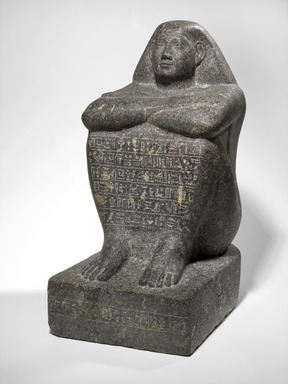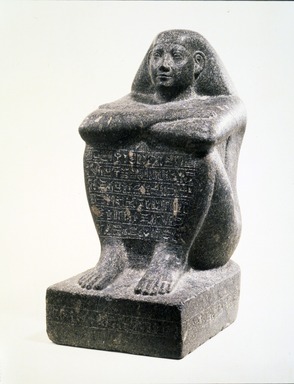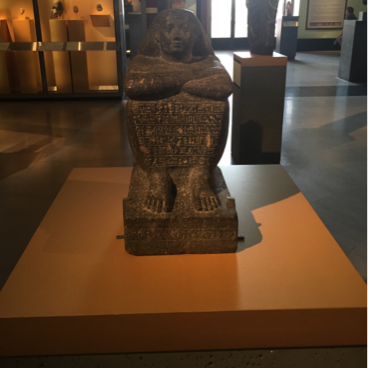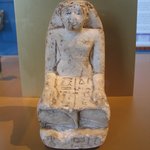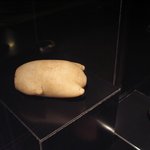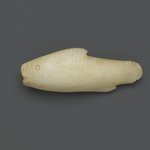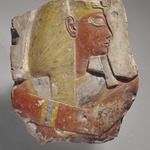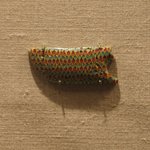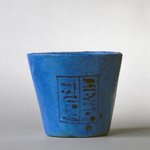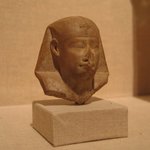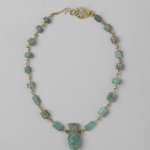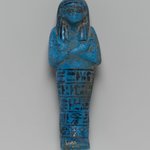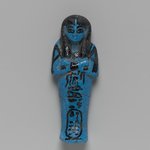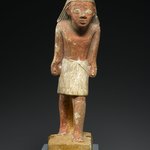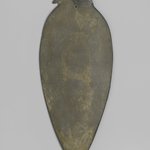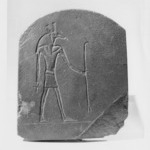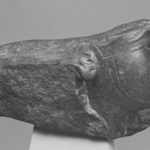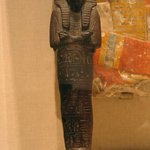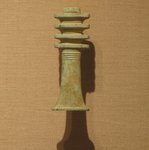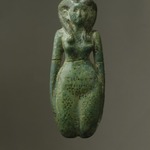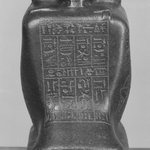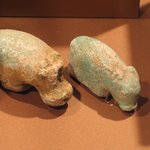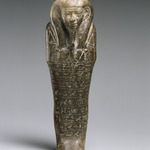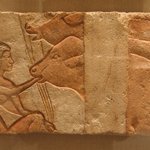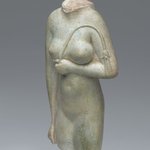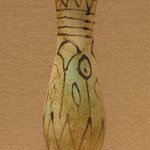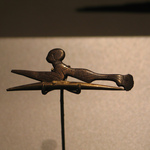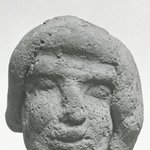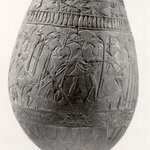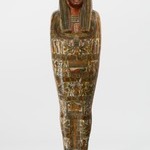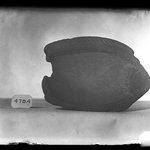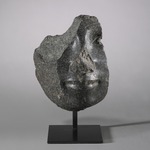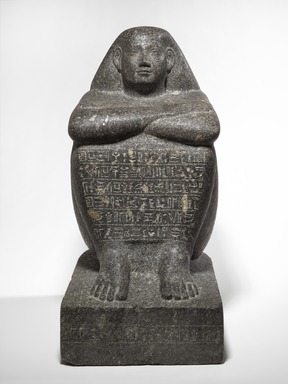

Egyptian. Padimahes, ca. 760–525 B.C.E. Granodiorite with feldspar phenocrystals, 18 1/4 x 8 11/16 x 12 5/8 in., 115 lb. (46.3 x 22 x 32.1 cm, 52.16kg). Brooklyn Museum, Charles Edwin Wilbour Fund, 64.146. Creative Commons-BY (Photo: Brooklyn Museum, 64.146_front_PS1.jpg)
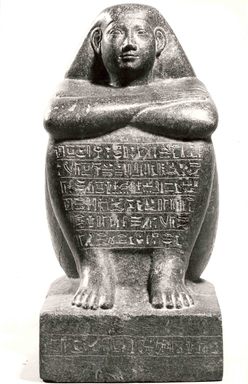
Egyptian. Padimahes, ca. 760–525 B.C.E. Granodiorite with feldspar phenocrystals, 18 1/4 x 8 11/16 x 12 5/8 in., 115 lb. (46.3 x 22 x 32.1 cm, 52.16kg). Brooklyn Museum, Charles Edwin Wilbour Fund, 64.146. Creative Commons-BY (Photo: Brooklyn Museum, CUR.64.146_negA_bw.jpg)
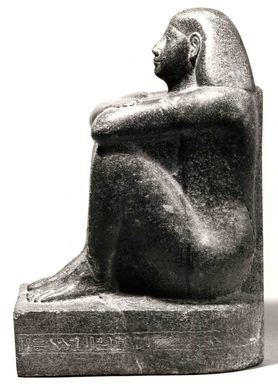
Egyptian. Padimahes, ca. 760–525 B.C.E. Granodiorite with feldspar phenocrystals, 18 1/4 x 8 11/16 x 12 5/8 in., 115 lb. (46.3 x 22 x 32.1 cm, 52.16kg). Brooklyn Museum, Charles Edwin Wilbour Fund, 64.146. Creative Commons-BY (Photo: Brooklyn Museum, CUR.64.146_negB_bw.jpg)
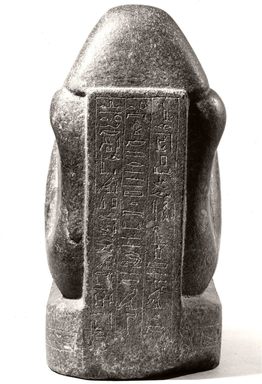
Egyptian. Padimahes, ca. 760–525 B.C.E. Granodiorite with feldspar phenocrystals, 18 1/4 x 8 11/16 x 12 5/8 in., 115 lb. (46.3 x 22 x 32.1 cm, 52.16kg). Brooklyn Museum, Charles Edwin Wilbour Fund, 64.146. Creative Commons-BY (Photo: Brooklyn Museum, CUR.64.146_negC_bw.jpg)
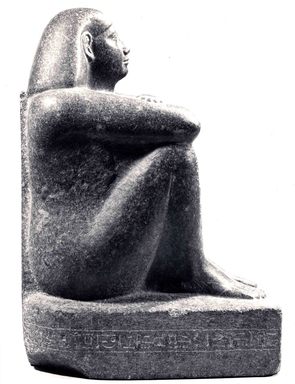
Egyptian. Padimahes, ca. 760–525 B.C.E. Granodiorite with feldspar phenocrystals, 18 1/4 x 8 11/16 x 12 5/8 in., 115 lb. (46.3 x 22 x 32.1 cm, 52.16kg). Brooklyn Museum, Charles Edwin Wilbour Fund, 64.146. Creative Commons-BY (Photo: Brooklyn Museum, CUR.64.146_negD_bw.jpg)
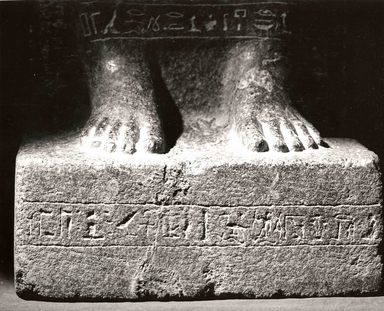
Egyptian. Padimahes, ca. 760–525 B.C.E. Granodiorite with feldspar phenocrystals, 18 1/4 x 8 11/16 x 12 5/8 in., 115 lb. (46.3 x 22 x 32.1 cm, 52.16kg). Brooklyn Museum, Charles Edwin Wilbour Fund, 64.146. Creative Commons-BY (Photo: Brooklyn Museum, CUR.64.146_negE_bw.jpg)
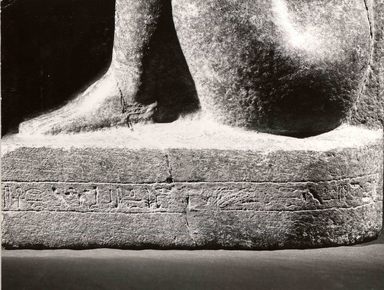
Egyptian. Padimahes, ca. 760–525 B.C.E. Granodiorite with feldspar phenocrystals, 18 1/4 x 8 11/16 x 12 5/8 in., 115 lb. (46.3 x 22 x 32.1 cm, 52.16kg). Brooklyn Museum, Charles Edwin Wilbour Fund, 64.146. Creative Commons-BY (Photo: Brooklyn Museum, CUR.64.146_negF_bw.jpg)
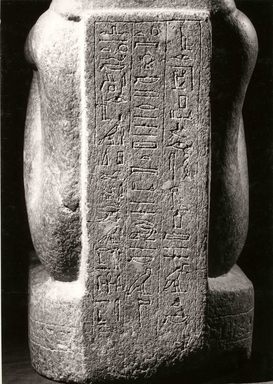
Egyptian. Padimahes, ca. 760–525 B.C.E. Granodiorite with feldspar phenocrystals, 18 1/4 x 8 11/16 x 12 5/8 in., 115 lb. (46.3 x 22 x 32.1 cm, 52.16kg). Brooklyn Museum, Charles Edwin Wilbour Fund, 64.146. Creative Commons-BY (Photo: Brooklyn Museum, CUR.64.146_negG_bw.jpg)

Egyptian. Padimahes, ca. 760–525 B.C.E. Granodiorite with feldspar phenocrystals, 18 1/4 x 8 11/16 x 12 5/8 in., 115 lb. (46.3 x 22 x 32.1 cm, 52.16kg). Brooklyn Museum, Charles Edwin Wilbour Fund, 64.146. Creative Commons-BY (Photo: Brooklyn Museum, CUR.64.146_negH_bw.jpg)
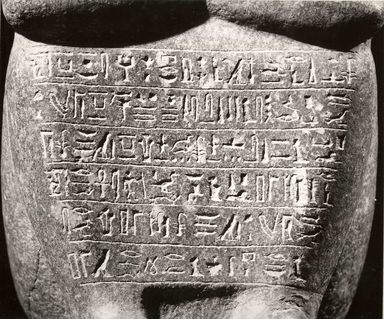
Egyptian. Padimahes, ca. 760–525 B.C.E. Granodiorite with feldspar phenocrystals, 18 1/4 x 8 11/16 x 12 5/8 in., 115 lb. (46.3 x 22 x 32.1 cm, 52.16kg). Brooklyn Museum, Charles Edwin Wilbour Fund, 64.146. Creative Commons-BY (Photo: Brooklyn Museum, CUR.64.146_negI_bw.jpg)
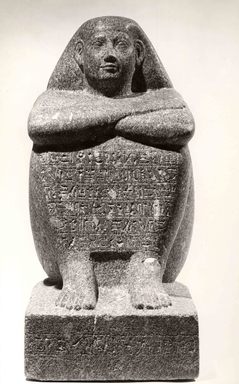
Egyptian. Padimahes, ca. 760–525 B.C.E. Granodiorite with feldspar phenocrystals, 18 1/4 x 8 11/16 x 12 5/8 in., 115 lb. (46.3 x 22 x 32.1 cm, 52.16kg). Brooklyn Museum, Charles Edwin Wilbour Fund, 64.146. Creative Commons-BY (Photo: Brooklyn Museum, CUR.64.146_negJ_bw.jpg)

Egyptian. Padimahes, ca. 760–525 B.C.E. Granodiorite with feldspar phenocrystals, 18 1/4 x 8 11/16 x 12 5/8 in., 115 lb. (46.3 x 22 x 32.1 cm, 52.16kg). Brooklyn Museum, Charles Edwin Wilbour Fund, 64.146. Creative Commons-BY (Photo: Brooklyn Museum, CUR.64.146_negK_bw.jpg)

Egyptian. Padimahes, ca. 760–525 B.C.E. Granodiorite with feldspar phenocrystals, 18 1/4 x 8 11/16 x 12 5/8 in., 115 lb. (46.3 x 22 x 32.1 cm, 52.16kg). Brooklyn Museum, Charles Edwin Wilbour Fund, 64.146. Creative Commons-BY (Photo: Brooklyn Museum, CUR.64.146_negL_bw.jpg)
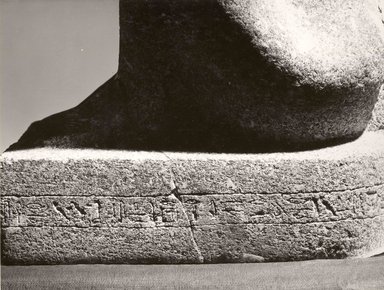
Egyptian. Padimahes, ca. 760–525 B.C.E. Granodiorite with feldspar phenocrystals, 18 1/4 x 8 11/16 x 12 5/8 in., 115 lb. (46.3 x 22 x 32.1 cm, 52.16kg). Brooklyn Museum, Charles Edwin Wilbour Fund, 64.146. Creative Commons-BY (Photo: Brooklyn Museum, CUR.64.146_negM_bw.jpg)
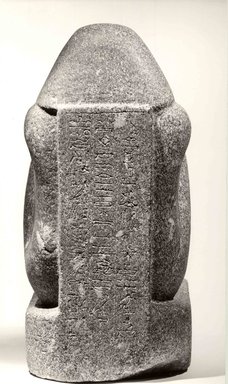
Egyptian. Padimahes, ca. 760–525 B.C.E. Granodiorite with feldspar phenocrystals, 18 1/4 x 8 11/16 x 12 5/8 in., 115 lb. (46.3 x 22 x 32.1 cm, 52.16kg). Brooklyn Museum, Charles Edwin Wilbour Fund, 64.146. Creative Commons-BY (Photo: Brooklyn Museum, CUR.64.146_negN_bw.jpg)
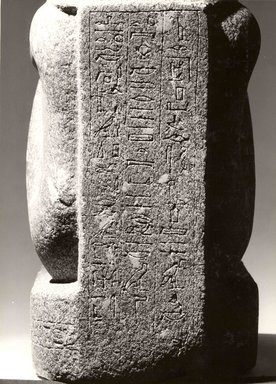
Egyptian. Padimahes, ca. 760–525 B.C.E. Granodiorite with feldspar phenocrystals, 18 1/4 x 8 11/16 x 12 5/8 in., 115 lb. (46.3 x 22 x 32.1 cm, 52.16kg). Brooklyn Museum, Charles Edwin Wilbour Fund, 64.146. Creative Commons-BY (Photo: Brooklyn Museum, CUR.64.146_negO_bw.jpg)
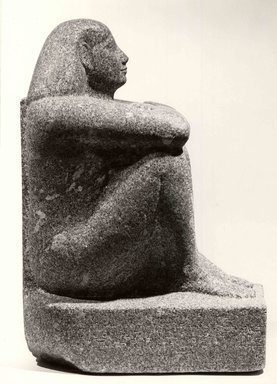
Egyptian. Padimahes, ca. 760–525 B.C.E. Granodiorite with feldspar phenocrystals, 18 1/4 x 8 11/16 x 12 5/8 in., 115 lb. (46.3 x 22 x 32.1 cm, 52.16kg). Brooklyn Museum, Charles Edwin Wilbour Fund, 64.146. Creative Commons-BY (Photo: Brooklyn Museum, CUR.64.146_negP_bw.jpg)

Egyptian. Padimahes, ca. 760–525 B.C.E. Granodiorite with feldspar phenocrystals, 18 1/4 x 8 11/16 x 12 5/8 in., 115 lb. (46.3 x 22 x 32.1 cm, 52.16kg). Brooklyn Museum, Charles Edwin Wilbour Fund, 64.146. Creative Commons-BY (Photo: Brooklyn Museum, CUR.64.146_negQ_bw.jpg)

Egyptian. Padimahes, ca. 760–525 B.C.E. Granodiorite with feldspar phenocrystals, 18 1/4 x 8 11/16 x 12 5/8 in., 115 lb. (46.3 x 22 x 32.1 cm, 52.16kg). Brooklyn Museum, Charles Edwin Wilbour Fund, 64.146. Creative Commons-BY (Photo: Brooklyn Museum, CUR.64.146_negR_bw.jpg)
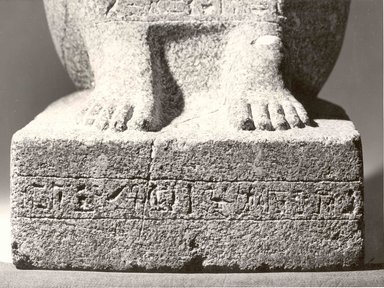
Egyptian. Padimahes, ca. 760–525 B.C.E. Granodiorite with feldspar phenocrystals, 18 1/4 x 8 11/16 x 12 5/8 in., 115 lb. (46.3 x 22 x 32.1 cm, 52.16kg). Brooklyn Museum, Charles Edwin Wilbour Fund, 64.146. Creative Commons-BY (Photo: Brooklyn Museum, CUR.64.146_negS_bw.jpg)
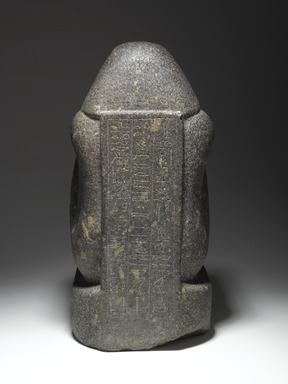
Egyptian. Padimahes, ca. 760–525 B.C.E. Granodiorite with feldspar phenocrystals, 18 1/4 x 8 11/16 x 12 5/8 in., 115 lb. (46.3 x 22 x 32.1 cm, 52.16kg). Brooklyn Museum, Charles Edwin Wilbour Fund, 64.146. Creative Commons-BY (Photo: Brooklyn Museum, 64.146_back_PS1.jpg)
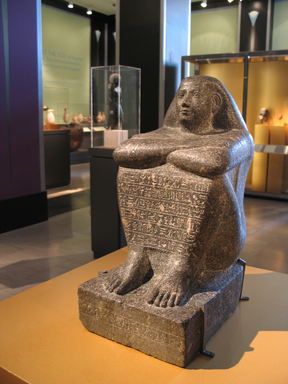
Egyptian. Padimahes, ca. 760–525 B.C.E. Granodiorite with feldspar phenocrystals, 18 1/4 x 8 11/16 x 12 5/8 in., 115 lb. (46.3 x 22 x 32.1 cm, 52.16kg). Brooklyn Museum, Charles Edwin Wilbour Fund, 64.146. Creative Commons-BY (Photo: Brooklyn Museum, CUR.64.146_erg456_2014.jpg)
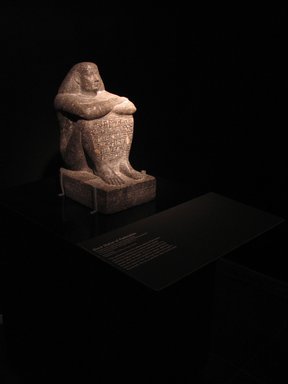
Egyptian. Padimahes, ca. 760–525 B.C.E. Granodiorite with feldspar phenocrystals, 18 1/4 x 8 11/16 x 12 5/8 in., 115 lb. (46.3 x 22 x 32.1 cm, 52.16kg). Brooklyn Museum, Charles Edwin Wilbour Fund, 64.146. Creative Commons-BY (Photo: Brooklyn Museum, CUR.64.146_tlf.jpg)
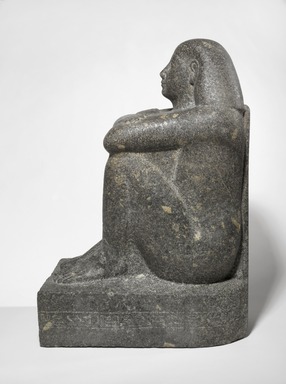
Egyptian. Padimahes, ca. 760–525 B.C.E. Granodiorite with feldspar phenocrystals, 18 1/4 x 8 11/16 x 12 5/8 in., 115 lb. (46.3 x 22 x 32.1 cm, 52.16kg). Brooklyn Museum, Charles Edwin Wilbour Fund, 64.146. Creative Commons-BY (Photo: Brooklyn Museum, 64.146_left_PS1.jpg)
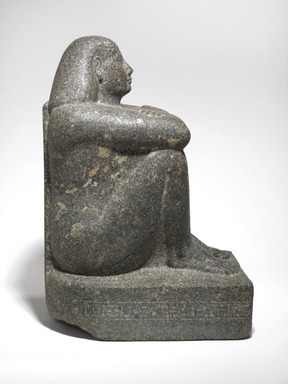
Egyptian. Padimahes, ca. 760–525 B.C.E. Granodiorite with feldspar phenocrystals, 18 1/4 x 8 11/16 x 12 5/8 in., 115 lb. (46.3 x 22 x 32.1 cm, 52.16kg). Brooklyn Museum, Charles Edwin Wilbour Fund, 64.146. Creative Commons-BY (Photo: Brooklyn Museum, 64.146_right_PS1.jpg)
Padimahes
Egyptian, Classical, Ancient Near Eastern Art
On View: 19th Dynasty to Roman Period, Martha A. and Robert S. Rubin Gallery, 3rd Floor

